Photos: Great Lakes Schooner Found Nearly Intact 142 Years After it Sank
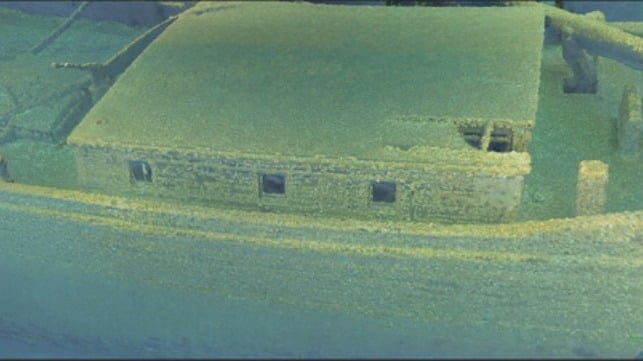
A nearly perfectly preserved wreck was recently located sitting on the bottom of Lake Michigan 142 years after it sunk. The schooner Trinidad was lost so quickly on May 11, 1881, that the captain and crew had no time to gather personal effects, which the survey team reports remain visible in the well-preserved ship.
Wisconsin Maritime Historians Brendon Baillod and Bob Jaeck announced the find which was made in mid-July after two years of search for the wreck. It lies in nearly 300 feet of water off Algoma, Wisconsin.
The Trinidad had piqued Baillod’s interest nearly twenty years earlier while constructing a database of all known vessels lost in Wisconsin waters. He says the historic schooner “ticked all the boxes” as a candidate for discovery. Her crew gave a good description of where she sank, and she went down fairly slowly in deep water so she was likely very intact. She was also fairly near to a port city for convenient access and her loss was not well-known, even to the local community. Few people if any had ever searched for her.
Baillod collected dozens of historical news articles from the 1800s about the Trinidad’s build, launch, and career. He also studied the shipping lanes shown on historical nautical charts of the area and compared them with accounts from the Trinidad’s surviving crew to construct a search grid.
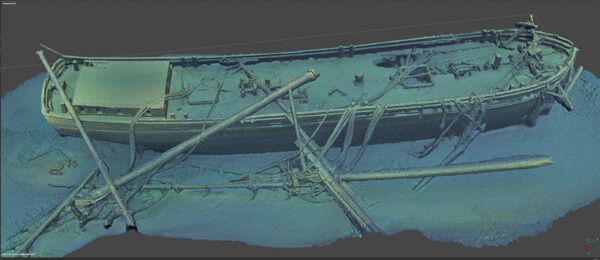
After 142 years, the vessel is largely intact (State Historical Society of Wisconsin)
The vessel was interesting because she was a unique type known as “canallers” because they were designed to be able to pass through the Welland Canal connecting Lakes Erie and Ontario. The Trinidad had been built in 1867 at Grand Island, New York just below Niagara Falls for two Oswego forwarding merchants for use in the grain trade. She was 140 feet long with two masts and according to Baillod had unusually large and well-appointed accommodations for her day.
The Trinidad’s main purpose was to carry coal or iron from Oswego, New York, then the eastern terminus of the Lakes, to Chicago and Milwaukee on the western Lakes. She would return with Wisconsin wheat, which would then be shipped down the Erie or Oswego Canal to the cities of the East Coast.
Despite the grain trade being extremely lucrative, the Trinidad was not well maintained and in 1879 she was sold. Carrying coal to the mines on Silver Islet in Lake Superior in May 1880 she struck a reef approaching the pier, tearing out ten feet of her bottom but she was salvaged and repaired. In the spring of 1881 with a crew of eight aboard and her captain, she sailed from Port Huron in heavy spring ice. The ice was so heavy she required assistance but made it into Lake Michigan.
The vessel, which had been leaking slowly for a few years, seemed to be taking on more water but they were managing it with the pumps. At 4:45 a.m. on May 11, however, she suddenly lurched forward and began to sink rapidly. Captain Higgins and the crew had no time to gather their personal effects and immediately launched their small yawl boat. The crew ultimately made it to Algoma, Wisconsin, a distance of nearly ten miles.
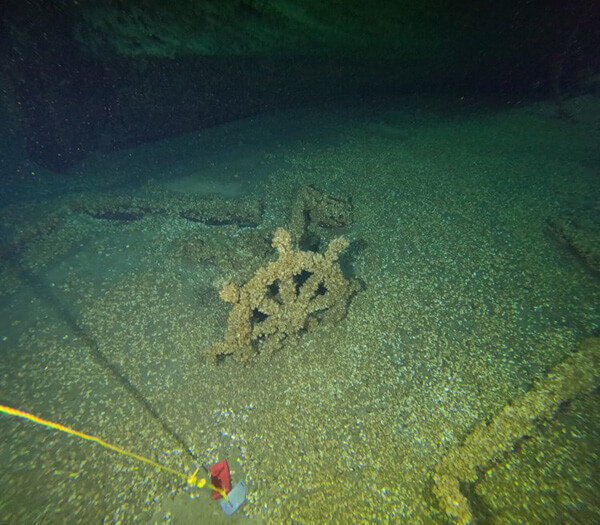
Ship's wheel still in place (State Historical Society of Wisconsin)
The search team reports they found the vessel almost exactly where the Trinidad’s captain had reported her loss in 1881. The State Historical Society of Wisconsin’s Maritime Archeology program arranged for the site to be surveyed with a commercial ROV which provided the details to confirm the identity of the wreck.
They report the vessel is remarkably intact, with her deck house still in place, containing the crew’s possessions, dishes, anchors, bell, and many other artifacts from the day of her loss in May 1881. The wreck has now been photographically documented and future plans for the Trinidad include nominating her remains to the National Register of Historic Places.
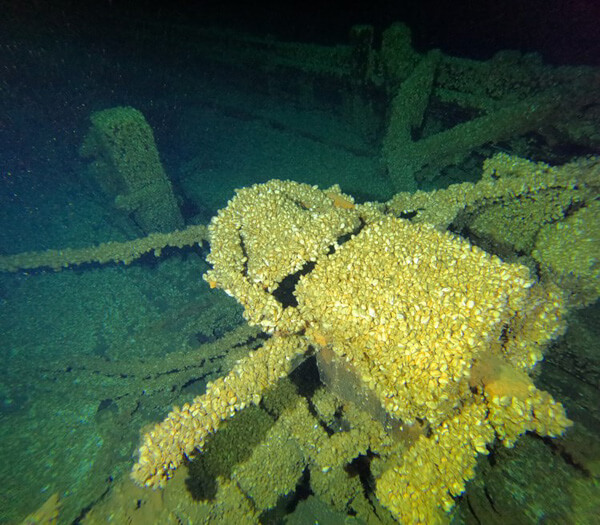
Ship's bell (State Historical Society of Wisconsin)
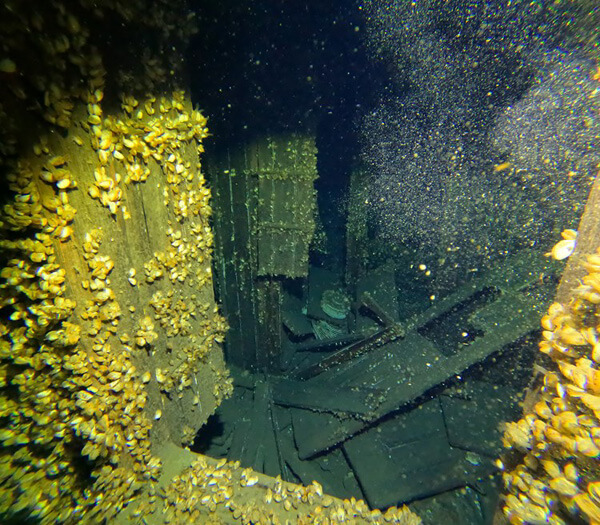
Personal effects are still visible in the well-preserved deck house (State Historical Society of Wisconsin)
